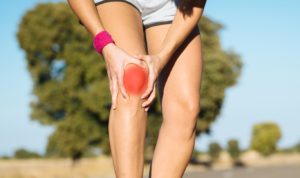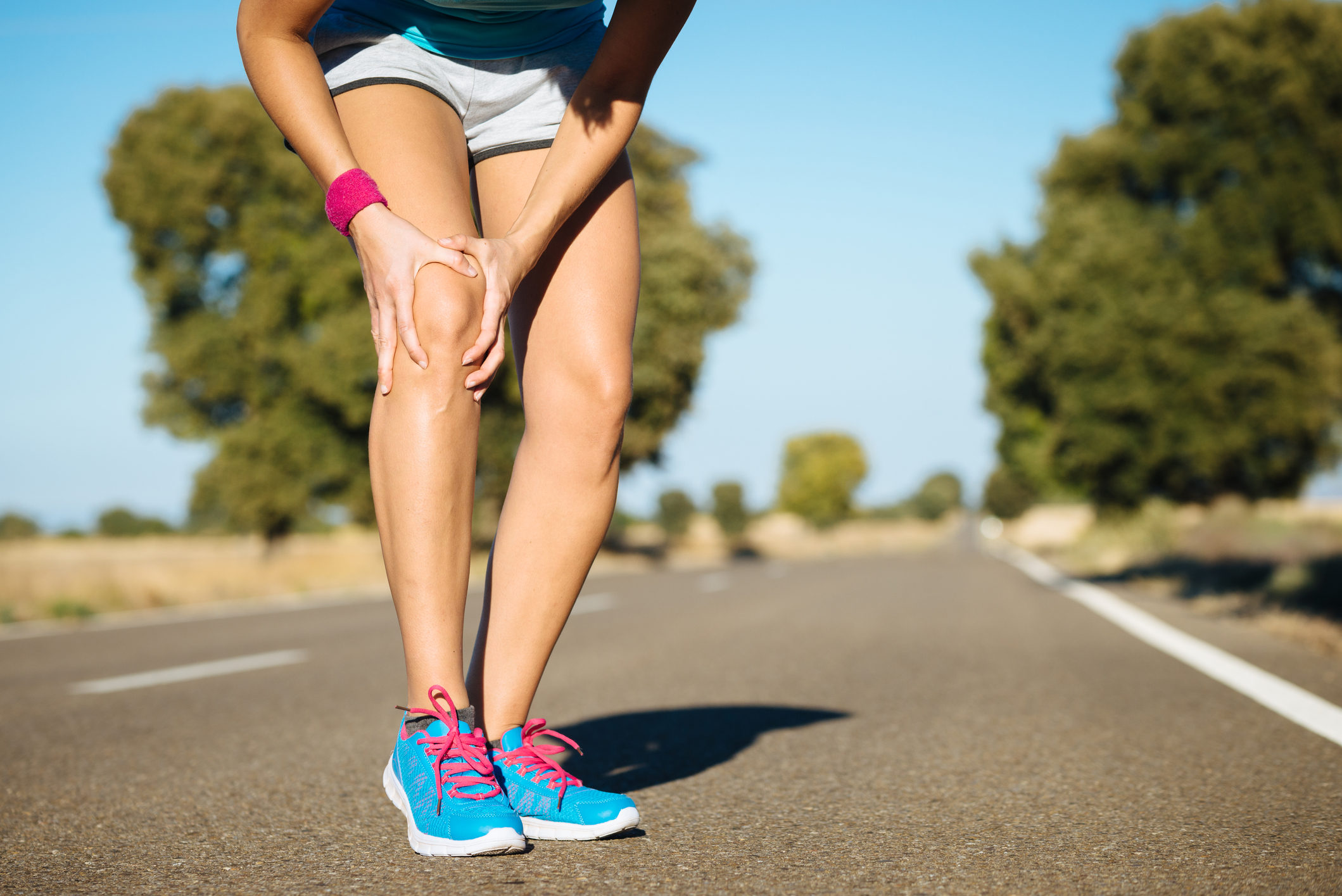Patellofemoral Pain Syndrome

Patellofemoral Pain Syndrome (PFPS) is the most common over-use, running-related injury. Roughly 40% of runners every year will suffer a knee injury and more than half of those injuries are attributable to patellofemoral pain syndrome. Female runners are twice as likely as male runners to suffer from PFPS. In spite of its prevalence, patellofemoral pain syndrome remains an orthopedic enigma because of a multitude of contributing causes.
What is patellofemoral pain syndrome?
The patella is another name for your knee cap. The femur is your thigh bone. As your knee flexes and extends, the patella glides over the end of the femur. This movement occurs at the patellofemoral joint. Patients with PFPS typically complain of diffuse pain around the front of the knee. Overuse, rather than a specific injury, is the cause in most cases. The pain is aggravated by bending and flexing of the knee such as in running and jumping, and it improves with rest. Swelling can be present.
How is patellofemoral pain syndrome diagnosed?
Clinical examination and patient history are typically sufficient to make the diagnosis of patellofemoral pain syndrome. Additional studies such as x-ray and MRI are sometimes used to assist in the diagnosis and to rule out other potential problems such as: arthritis, bone spurs, meniscal injuries, bursitis, and tendonitis. A 3D gait examination is the best diagnostic tool to identify movement patterns contributing to PFPS.
What causes patellofemoral pain syndrome?
The cause of patellofemoral pain syndrome has remained vague and controversial primarily because there are several biomechanical and anatomical factors with which it has been associated. For instance, as the femur (thigh bone) internally rotates it displaces from under the patella (knee cap). This misalignment causes increased pressure between the two bones leading to pain. Research has shown that it is the femur that moves out of position rather than the patella. In addition, those runners who suffer from “knock-knees,” or what doctors call genu valgum, are more likely to suffer from patellofemoral pain syndrome. Even slight amounts of this inward tilt of the femur can increase the chances of developing PFPS. This explains why women are twice as likely to suffer from PFPS as men. The movement of foot also affects the knee through twisting forces generated by the transfer of weight over the foot during running. To date, there is some evidence that over-pronation can lead to misalignment at the patellofemoral joint and thus pain. However, poor foot biomechanics are unlikely to be the sole cause of patellofemoral pain syndrome.
How is patellofemoral pain syndrome treated?
Treatment for PFPS focuses on two main problems: inflammation and pain along with poor biomechanics. Inflammation can be treated with non-steroidal anti-inflammatory drugs (NSAIDs) and ice. Sometimes cortisone injections are needed to reduce pain and inflammation if severe enough. Biomechanical deficiencies are treated with strengthening and stretching exercises along with physical therapy. Foot orthotics have been show to effectively improve pain in PFPS patients. Knee bracing and taping have been show to help with symptoms in patellofemoral pain syndrome, but on their own they are less effective than other treatments. Rarely, but sometimes, surgery is necessary to treat inflammation and damage within the patellofemoral joint.
When can I return to running?
The goal of rehabilitation is return you to running as soon as is safely possible. If you return to a full training load too soon, the injury may return or worsen. Everyone recovers from injury at a different rate, so don’t compare your rehabilitation to other runners. Returning to running is determined by how well your knee responds to treatment rather than a set number of days or weeks. In general, the longer you have had the symptoms, the longer it will take you to recover. Here are some general guidelines for a full return to running. Keep in mind, some runners may not have to completely stop running, but merely reduce their training load (distance, intensity, frequency) during the rehabilitation process.
- You should be able to bend and straighten your knee without pain.
- Your knee should not be swollen.
- You should be able to jog in a straight line without limping.
- You should be able to sprint without limping.
- You should be able to perform 45-degree and 90-degree cuts without difficulty.
- You should be able to jump on both legs without pain.
- You should able to jump on the injured leg without pain.
What can be done to reduce the chances of developing patellofemoral pain syndrome?
Simply put, improving areas of biomechanical deficiency is the most important way to reduce the chances of PFPS. This involves consistent focus on strength and flexibility of the hips and legs. Avoid running on sloped surfaces. Vary your running routine, routes, and intensity to reduce the chances of PFPS affecting your running regimen. Selecting proper shoes for your feet can lead to reduced risks of injury.
This information is not intended to diagnose, treat, or prevent any injury or disease. It is intended to serve as an overview of running-related injuries and should not be used as a substitute for sound medical advice from a doctor or therapist.



